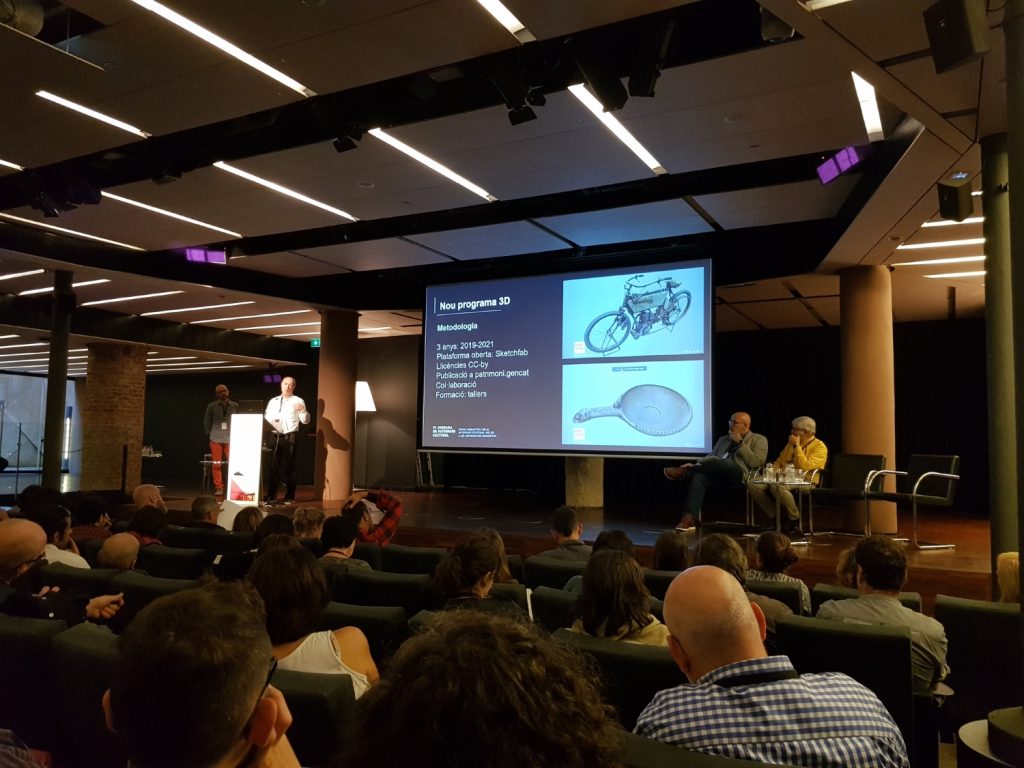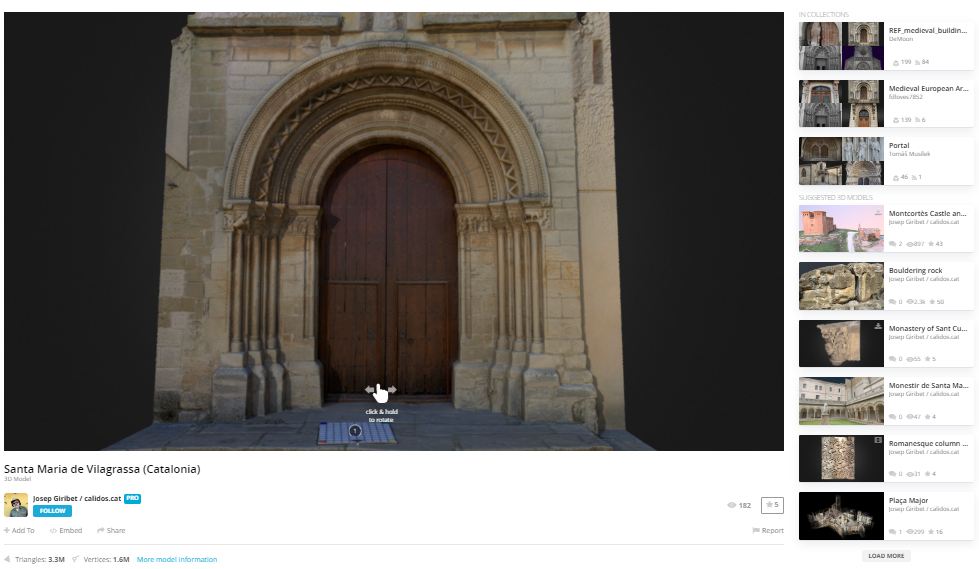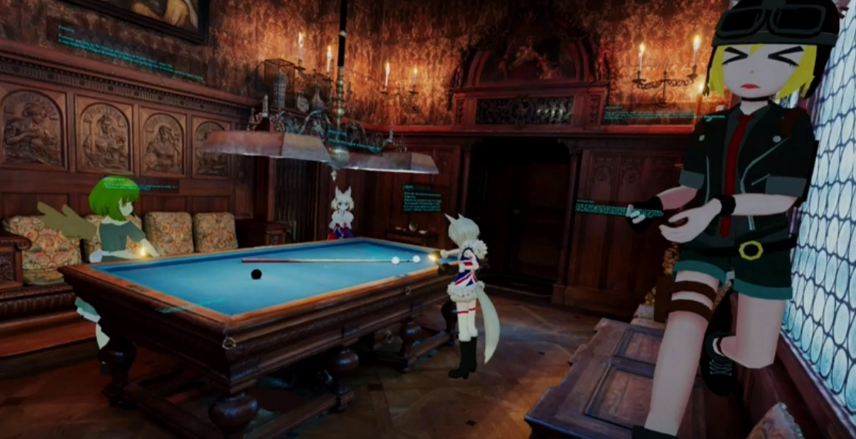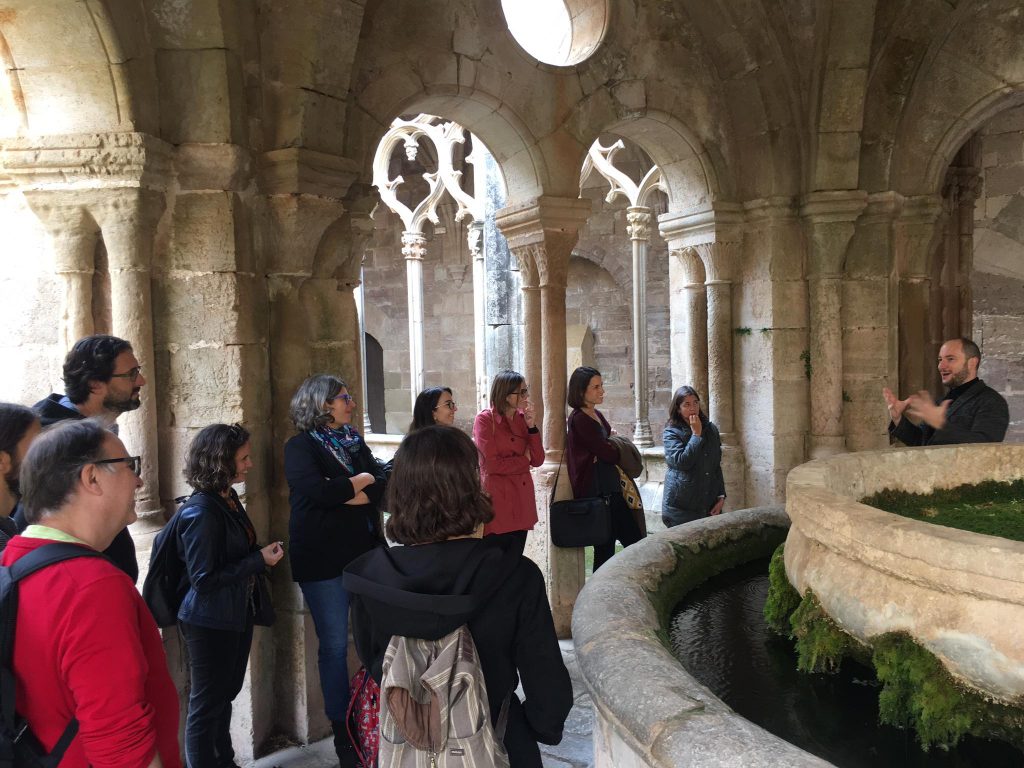Insights from the 4th Cultural Heritage Conference, Barcelona
Irina Grevtsova
In recent years, the word “immersive” has become fashionable and it is used to describe almost everything: living as a local in a tourist destination; bathing beneath waterfalls in a digital cascade; going on stage and interacting with actors; taking selfies in pop-up installations, or solving mysteries in an escape room.
Immersion is not a new concept. Its origins go deep into the history of humanity, in the stories that were told around the fire, in the religious ceremonies made atmospheric with smoke and light and sound effects, seeking contact with the divine or magical, or theatres of terror, which included all sorts of sensory stimulation, from smells and demoniacal or phantasmagorical projections to electric shocks.
Theme parks were invented by the father of modern immersion, Walt Disney, in the 1970s, and they have now reached peaks of refinement. An example of this is the “Star Wars: Galactic Starcruiser” immersive hotel, where, when they check in, guests board a spacecraft and stay there for two nights.
The recent arrival of immersion in museums has given rise to new discussions in the professional community and it has been the core theme at the conferences that have been held in recent years, such as the one by the American Alliance of Museums in 2018 or MW (MuseWeb) in 2019. Barcelona has taken the lead in the 4th Cultural Heritage Conference entitled “New Heritage Narratives: From 3D to Immersive Experiences”, which was held on 29 and 30 October.
Immersion and its history: from the concept museum to visiting a two-dimensional city
The workshop was held on the first day. Its objective was to teach cultural heritage professionals how to create innovative visiting experiences, based on the study of The Lost Palace. The session was directed by Tim Powell, the creator of the project.
The workshop took place in one of the most emblematic historical monuments in Catalonia, the Royal Monastery of Santes Creus, more than 800 years old. It was not chosen by chance. Fifteen participants, divided into four groups using the ‘Design Thinking’ method, had to create experiences based on the monastery’s genius loci, and to focus the narratives on different types of tours.
Source: Albert Sierra
The presentations, made on day two of the conference, included a wide variety of experiences. All of them demonstrated the use of immersion in different experiential formats, such as mappings, escape rooms, virtual reality and video games.
As is customary, the conference was held in La Pedrera, and this year it was opened by Mariàngela Villalonga, Minister of Culture of the Generalitat de Catalunya.
The first speaker, José Luis de Vicente, in his presentation La lógica cultural de lo inmersivo (The Cultural Logic of Immersion), gave an overview of the history of the phenomenon of immersion, from its beginnings to the latest tends.

The principal objective consisted in debunking the myth that immersion is a new notion that has arrived along with technology. It would be more appropriate to place its origins two centuries ago, when the first 3D cinematographic systems appeared, such as the Kaiserpanorama of 1880. Later, artists working in different genres made wide-ranging use of immersion in their sonorous and visual works. New techniques for building the pavilions at world’s fairs and, of course, the most recent examples of cultural and leisure products were also developed, such as immersive theatres and escape rooms. By taking into account the whole context we can see that virtual reality plays only a modest role on the global stage of cultural experiences. Its obvious success with the public is due to its newness and its rapid incorporation in numerous industries. There can be no doubt that two of the most dramatic and controversial trends in immersive spaces are pop-up museums and the Museum of Ice Cream, so frequently talked about. This phenomenon has been heavily criticized by museologists and art critics, because of the word “museum” appearing in its name. And the first speaker was no exception.
Some experts claim that the term “museum” is too serious and generates expectations that might disappoint the public. Others are not at all worried and believe that visitors are capable of working out what kind of experience it is. Not long ago the creators of the Museum of Ice Cream sincerely admitted that it would be more appropriate not to call this place a museum but an “experium”, a combination of the words experience and museum.
While the museologists continue to discuss the influence of pop-up experiences, these are growing extremely quickly, like Tsunami Democràtic in Catalonia, which appears and disappears in a few days in different places. The main contribution of this kind of establishment lies in understanding the public’s new demands and shifting the focus of attention away from the museum objects and exhibitors and on to the visitors, their wishes and their emotions. The strategies developed based on this approach are 100% successful in the age of the experience economy. Sooner or later conventional museums will have to learn to make their actions more dynamic to create new sources of income.
If the first presentation talked about the general scene of immersive experiences, the second one submerged those listening in the depths of a project to show, from the inside, how an idea is created.
It is the project The Lost Palace, the winner of such important prizes as the Museums+ Heritage Award for Innovation and the First Heritage in Motion Award.

The product is an interactive audio-guide with which visitors walk through part of a palace that no longer exists. It combines immersive acoustic content, location based technologies, architectural installations and live shows. The guide makes it possible to see the city in two dimensions: to stroll through the busy streets of the centre in real time and, at the same time, to move in a different period of time, imagining oneself taking part in the historical events that occurred 200 years ago. According to Tim Powell, the secret of the project’s success lies in its creative design and its development. To design the project he called for participants on his webpage, and this enabled him to put together a creative group made up of specialists from very different areas. Another step, no less important, was testing the product before it was launched and during its use, which made it possible to modify and adapt the content to the public’s expectations. The huge audience figures and the public’s comments are proof of the guide’s success.
3D models: tools and methods
After this second presentation, the theme of the following ones took another direction, focusing on tools and methods of creating 3D models in the cultural heritage. The participants spoke about the latest methods and tools for digitally scanning objects and their use. To understand this subject it is important to know a bit about its history and some key concepts.
Thanks to technological development the scanning process has evolved enormously, making it possible to replace heavy, bulky scanners, which were used autonomously, with easily affordable mobile telephones and photographic cameras, thus reducing the costs to almost nothing. Without a doubt, the technique that has pride of place is photogrammetry. As you can tell by its name, this method consists of creating the model of an object based on photographs of it. To transfer a physical object from the real to the digital world it must be photographed from different perspectives, covering a total angle of 360º.
The photographs taken of archaeological ruins, cities, squares, museums, even microscopic objects, are uploaded to special processing programs, of which the best known is Agisoft PhotoScan. Using simple processes, hundreds of photos uploaded to the program generate a three-dimensional mould that can be downloaded and used in other programs.
The object transferred to the digital world by means of three-dimensional photographs is called a Digital Twin. A digital twin is a digital or virtual copy of physical objects and products. It must not be confused with 360º photos and videos and virtual reality.
The methods and possibilities offered by 3D fixing technology have been widely used by archaeologists. Over the last 10 years this has been the main subject for discussion at conferences devoted to the new technologies and the cultural heritage (for example, the Virtual Archaeology conference held in St Petersburg or the annual Cultural Heritage and New Technologies conference held in Vienna).
The cultural heritage, particularly vulnerable to destruction, needs digital twins, not just so that research goals may be achieved, but also so that restoration and reconstruction work can be carried out. Major fires in the National Museum of Brazil and the fire in the Cathedral of Notre Dame in Paris are obvious examples of the need to create digital copies of every monument and important object.
There are institutions that have been working in this area for a long time, such as, for example, the experience of the Scottish Digitization Department that Lyn Wilson talked about in her presentation
The Catalan Cultural Heritage Agency is a new trend that will take centre stage for three years. Albert Sierra and Lluís González, in their presentation Cataluña en 3D y el programa de digitalización del patrimonio (Catalonia in 3D and the Heritage Digitization Program), have launched a major project dedicated to the 3D digitization of the cultural monuments and museum pieces, and the museums themselves, in Catalonia.

3D models are also a tool popular with events managers and graphic designers. Given the enormous amount of 3D content production now, the need has arisen to create an open platform. This was how Sketchfab came into being, where, similarly to YouTube, users can upload their 3D models in open access.
Jeanne Lenglet, in her presentation Sketchfab: nuevas oportunidades para el uso de contenidos culturales e históricos en 3D (new opportunities for the use of 3D cultural and historical content), spoke about the main advantages of using the platform. Besides uploading models to it, this resource makes it possible to add extra information, to thus make the 3D models interactive.

Another presentation about the use of 3D tools was the one by Víctor López Menchero, who presented the project Global Digital Heritage.
Unlike YouTube, Sketchfab gives you the chance to view 3D models and also to download them. Erik Lesternal talked about the history of the scanned model of the Hallwylska museum, done using photogrammetry. After uploading it to Sketchfab, the 3D digital models had 158,000 views and 17,000 downloads, from different platforms. But the most interesting part came later, when users uploaded 3D models to VRchat, the largest virtual reality social platform, similar to Second life. The rooms of the palace came alive once more in the virtual space.

Users from all over the world, registered under fictitious names and with avatars from very peculiar stories, began to visit and inhabit it. Some users added special effects, like glass in the display cases or candlelight, bringing the museum more alive. Little by little, the new museum started turning into a meeting place, and more and more people began walking around its rooms. All this astonished the developers, who are now thinking how this huge success with virtual users can be used to create new experiences. It is a brilliant example of how to generate virtual social experiences featuring the public.
Also deserving of attention are initiatives such as the dramatized escape rooms developed by the Agbar Water Museum, and the virtual reality videogame and serious game of the Monastery of Pedralbes in Barcelona.
I analysed the case of the recently inaugurated first Digital Arts Centre in Barcelona IDEAL (Immersive, Digital, Exhibitions, Arts, Lab) in detail just after it opened and I stressed the fact that immersion is not just about projections and screens.
It is important to highlight the work of the Catalan Cultural Heritage Agency, whose priority is to support the power of storytelling. Its intense activity and the optimism with which innovative technologies are introduced to the sphere of the cultural heritage are admirable. In the presentation Las nuevas narrativas y la Agencia Catalana del Patrimonio Cultural (The New Narratives and the Catalan Cultural Heritage Agency), Damià Martínez talked about seven outstanding experiences developed by the Agency in recent years.

The conference was closed by Marisol López, director of the Digital Culture Section of the Department of Culture who weighed up the situation concisely and fluently. I recommend all readers who so wish, to listen to her, in a brief summary of the content of the presentations.
The presentations given at the 4th Conference confirm the increasingly important role of immersion in cultural experiences. The activation of the senses, the boom in emotional storytelling, which awakens the imagination, and immersive technologies constitute the algorithm of actions for generating successful experiences.
Related links
IV Jornada de Patrimoni Cultural. Noves narratives per al Patrimoni Cultural, videos.
“Com expliquem el patrimoni? De la immersió i el 3D a la narrativa multisensorial”, Mirador de les Arts, Novembre 8th, 2019.
“Insights de la IV Jornada del Patrimonio Cultural”, Digital Heritage & Culture, Novembre 6th, 2019.
Irina Grevtsova & Joan Sibina, Les experiències culturals immersives, in production.
Irina Grevtsova









